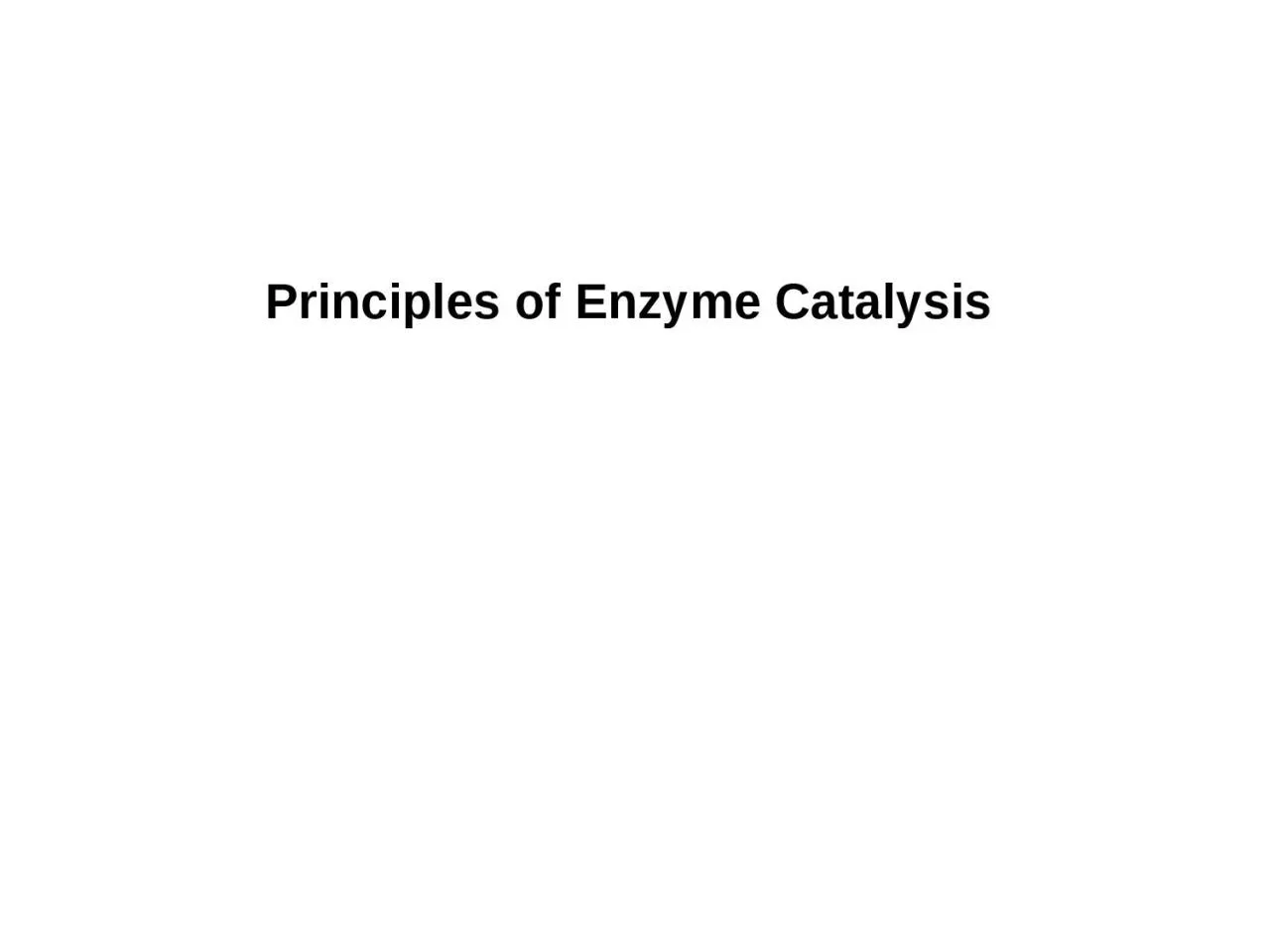

Thermodynamics is concerned with only the initial and final states of a process being independent of the paths between the two states Kinetics is concerned with the rate at which the process occurs and thus is concerned with the paths between the two states ID: 1041930
Download Presentation The PPT/PDF document "Principles of Enzyme Catalysis" is the property of its rightful owner. Permission is granted to download and print the materials on this web site for personal, non-commercial use only, and to display it on your personal computer provided you do not modify the materials and that you retain all copyright notices contained in the materials. By downloading content from our website, you accept the terms of this agreement.
1. Principles of Enzyme Catalysis
2. Thermodynamics is concerned with only the initial and final states of a process, being independent of the path(s) between the two states.Kinetics is concerned with the rate at which the process occurs and thus is concerned with the path(s) between the two states.The parable of the sugar packet
3. Wolfenden, R. (2003) Thermodynamic and extrathermodynamic requirements of enzyme catalysis. Biophys. Chem. 105, 559-572. Time Scale for Selected Biochemically Important ReactionsCarbonic anhydrase kcat = 20 x 106 s-1
4.
5. Collision Theoryk = (gkBT/h) C1-n e-DG‡/RTThe rate constant for the reaction is inversely proportional to the height of the barrier (DG‡) but proportional to temperatureis proportional to the concentration of reactantsKinetic energyNumber of moleculesBoltzmann distributionDG‡is proportional to the probability of a productive collision
6. Encounter ComplexAs two reactants diffuse together they become caged by the surrounding water molecules.In this encounter complex there is a greater probability that the reactants will collide rather than diffuse apart.
7. DG = DH -TDSDG‡ = DH‡ -TDS‡
8. Potential Mechanisms for Enzyme Catalytic EfficiencyBy binding substrates in the active site, enzymes can increase the effective local concentrations of reactants (Proximity effects)Substrate binding can correctly orient reacting groups in the active site (Orbital steering)Enzymes can promote desolvation upon substrate bindingEnzymes can enhance the inherent reactivity of functional groups by altering the microenvironment within the active site
9. Entropy-Enthalpy CompensationThe unfavorable entropy of activation (DS‡) of bringing the reactants together into the encounter complex is compensated by the favorable enthalpy of binding (DH) of the reactants in the active site.By binding substrates in the active site, enzymes can produce effective concentrations orders of magnitude greater than can be achieved in the absence of the catalyst.
10. Proximity Effects
11. Induced Fit (Transition State Binding)Wolfenden, R. (2003) Biophys. Chem. 105, 559-572
12. Induced Fit (Transition State Binding)MethotrexateAminopterin
13. Microenvironment EffectsMechanism of Acetoacetate Decarboxylase
14. Ho et al. (2009) Nature 459, 393-397
15. Ramped N-terminus to C-terminusLys115Substrate Schiff baseArg29Ho et al. (2009) Nature 459, 393-397
16. General Acid-Base CatalysisHuman Pancreatic RibonucleaseHis219His112NC
17. General Acid-Base CatalysisMechanism of Ribonuclease
18. CE35D52CRings A-DRings A-DInduced Fit in the Mechanism of Lysozyme
19. Vocadlo et al. (2001) Nature 412, 835-838
20. Covalent Catalysis in the Serine ProteasesSer195His57Asp102
21.
22. TrypsinChymotrypsinThrombinSubtilisin